The biggest mistakes beginners make when traveling in an RV, according to a couple who drove to all 50 states in one
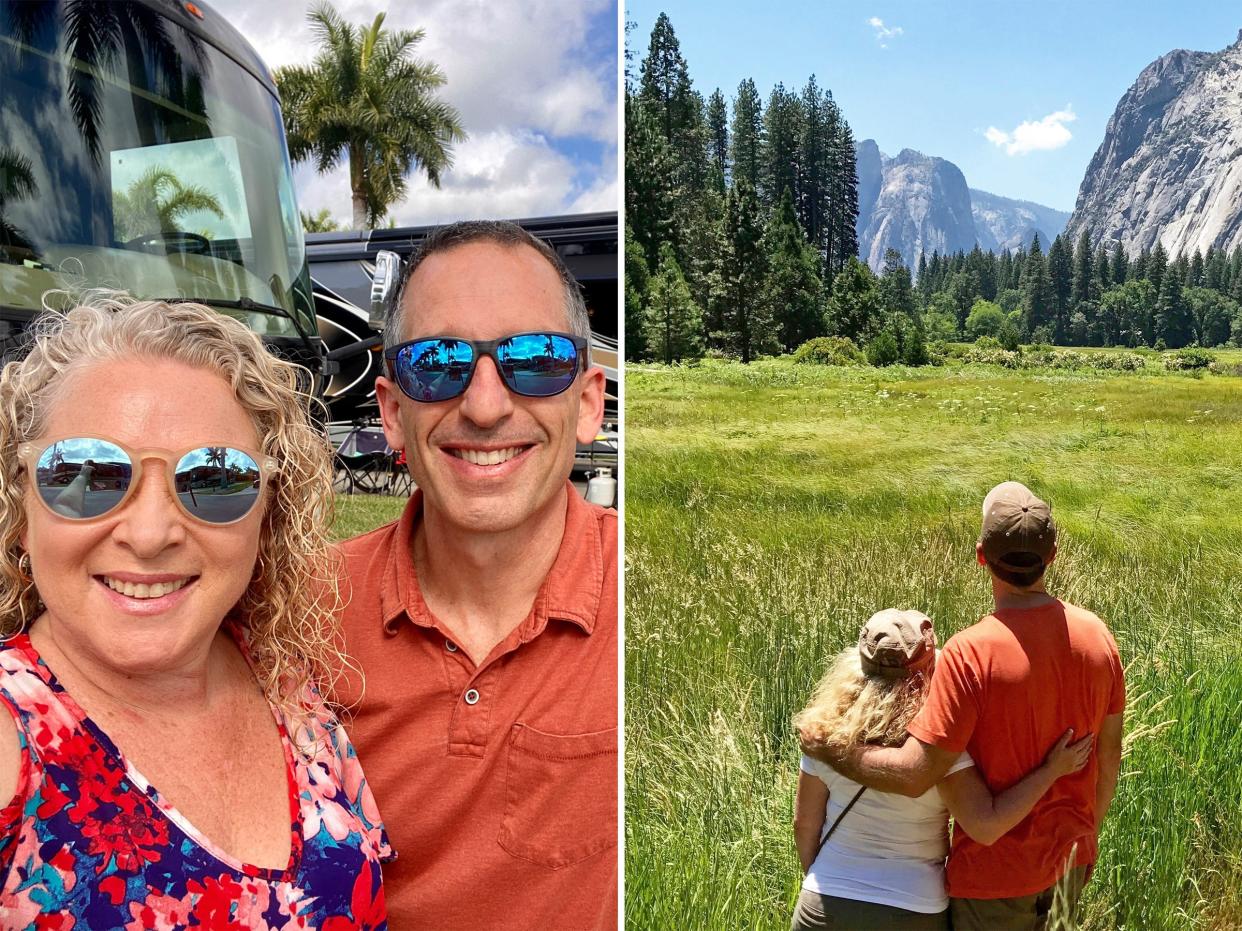
- Oops!Something went wrong.Please try again later.
Julie and Marc Bennett spoke to Insider about mistakes people make when they are new to RV life.
They shared how to select the right RV and properly take it on an adventure.
The couple also shared tips and tricks for common mishaps, like jumping straight into a big trip.
Many newbies to RV life don't do enough research before they buy their new home, Marc and Julie Bennett told Insider.
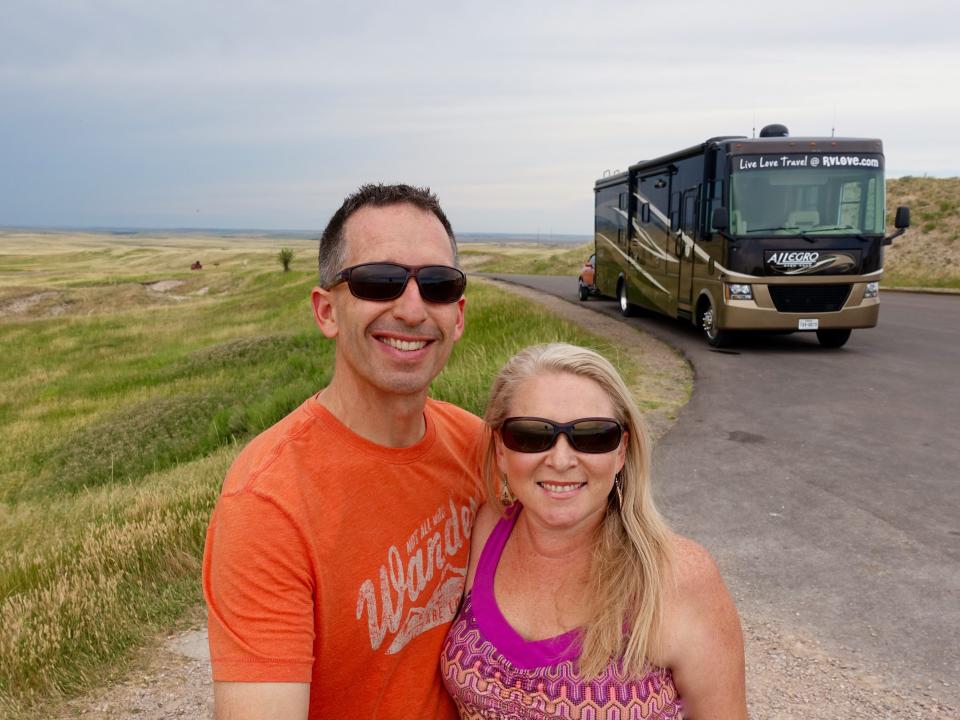
"It's not like buying a car," Julie Bennett, who has traveled through all 50 states in a recreational vehicle, said. "RVs are more complex. More things can go wrong with them."
Julie and her husband, Marc, traveled across the US in an RV together before writing two books on the subject: "RV Hacks" and "Living the RV Life."
Julie said people should do more research before purchasing an RV than they would for a regular vehicle.
"It's often better to buy a well-cared-for pre-owned RV than it is to buy a new RV. It will generally have fewer issues," she added.
Marc also recommended recording walk-throughs when touring and learning about an RV you are planning to purchase so you know how all the systems work before you take it for a ride.
As a result, a lot of people end up getting a bigger RV than they need.
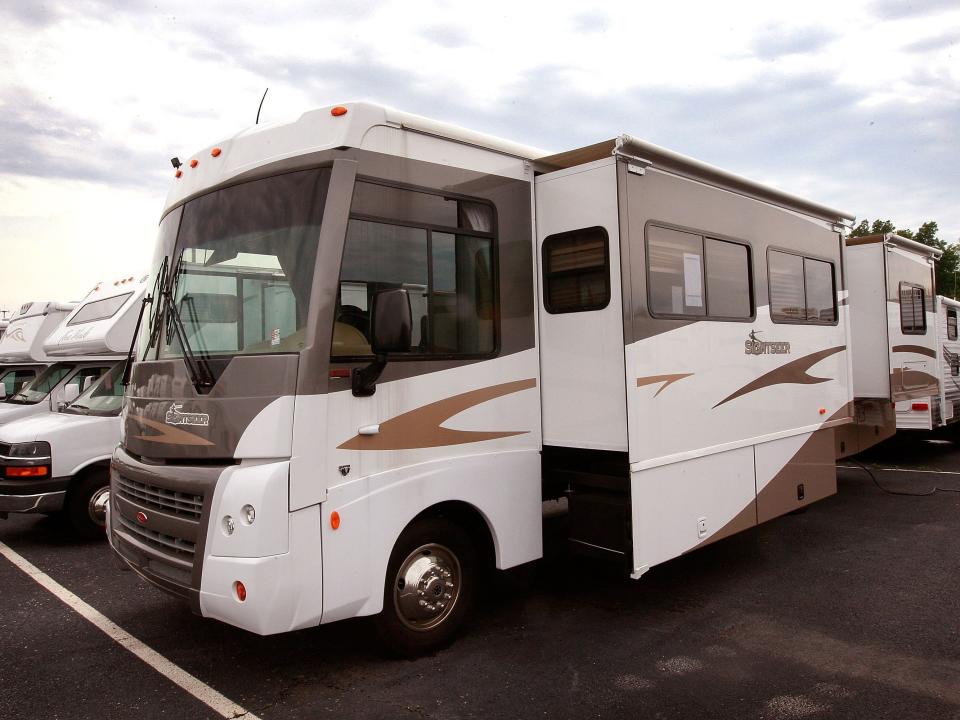
"I think another mistake people make is that they feel because they have a large home, They feel like they need the biggest RV there is," Marc said. "I think a better approach would be to choose the smallest RV that you feel you can be comfortable in."
Another big mistake is driving RVs immediately off the lot into a big trip, Julie said, but it's rare that the mobile home will be in perfect working condition.
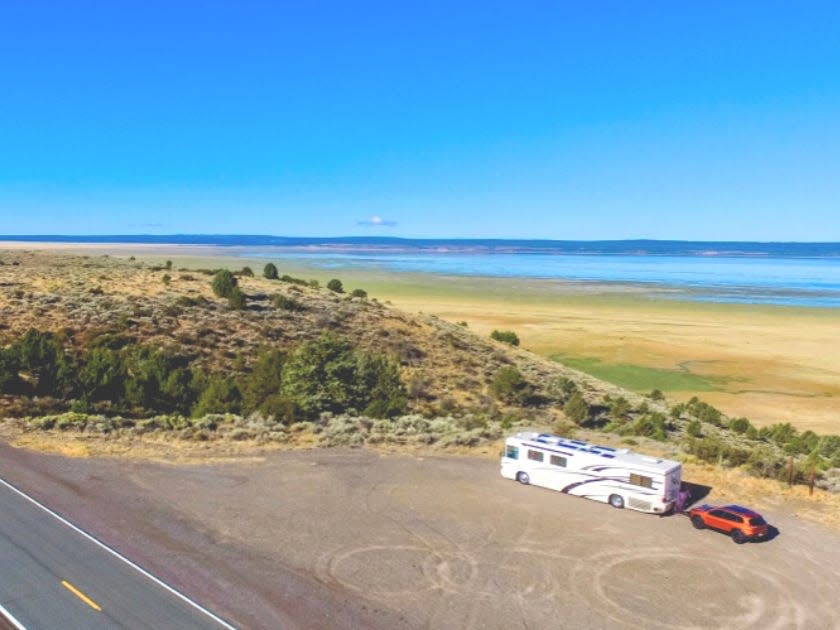
Instead, the couple recommends what they call a "shakeout trip" close to home to test out the vehicle and make a list of all its issues.
Once you've made the list on your local trips, Marc said to take the RV to a dealer to get everything fixed before heading out on a big trip.
Julie and Marc advise against treating an RV like any other car.
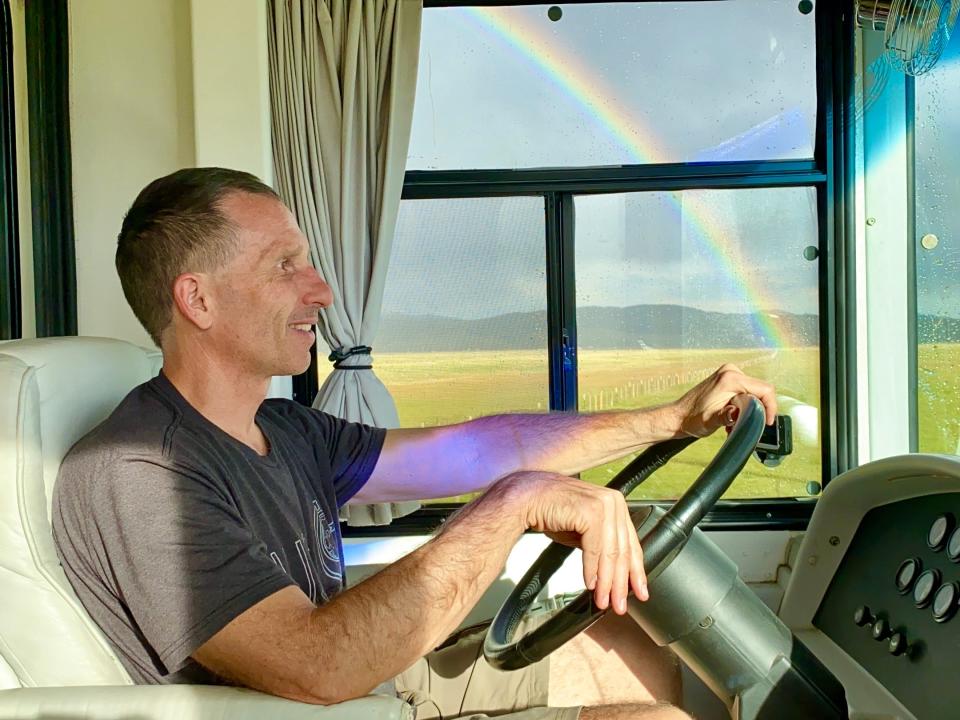
First off, it's not going to drive like a car, they said. It's bigger, so you have to do everything slower, including turning and breaking.
The couple recommends practicing parking and maneuvering the RV in an empty lot before taking it on an adventure.
Marc and Julie also said that when you're driving an RV, you can't rely on a navigation system meant for regular cars.
"RVs are longer, taller, wider, and they carry propane, which isn't allowed in a lot of tunnels," Julie said. "So there's a lot of restrictions on roads, especially in the Northeast."
In an RV, you need to check the tire pressure more frequently than in lighter vehicles, Marc said.

RV tires are put under heavier strain than regular cars, Marc said, so the couple recommends checking your tire pressure before every trip.
Putting too much weight inside an RV is easy to do if you're not paying attention, Marc and Julie said.

Julie said another common RV mistake is not being aware of the cargo-carrying capacity, which is on a yellow sticker on an inside door of the vehicle.
"By the time you load people, pets, clothes, and food and then fill up your water tank and fuel tanks, it's very easy to reach or exceed the safe cargo-carrying limit in an RV," she said.
Exceeding the safe limit can lead to a blown-out tire, she added.
Don't go off the grid before testing out your RV's water tanks and battery life, Julie said.
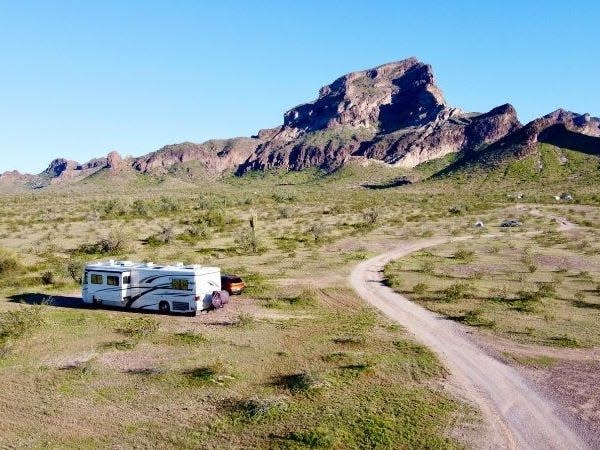
Camping in remote areas is possible in an RV because of the water tanks and battery life, but Julie and Marc said it's not wise to take an off the grid until you have familiarized yourself with the limitations of the off-grid systems.
To do this, the couple recommends spending a night in a campground with water and power but pretending you are off the grid. That way you can experiment with the water tank and battery life, but if something goes wrong, you can rely on the ground's amenities, they said.
People often overpack because they think they'll need more stuff than they actually end up using.
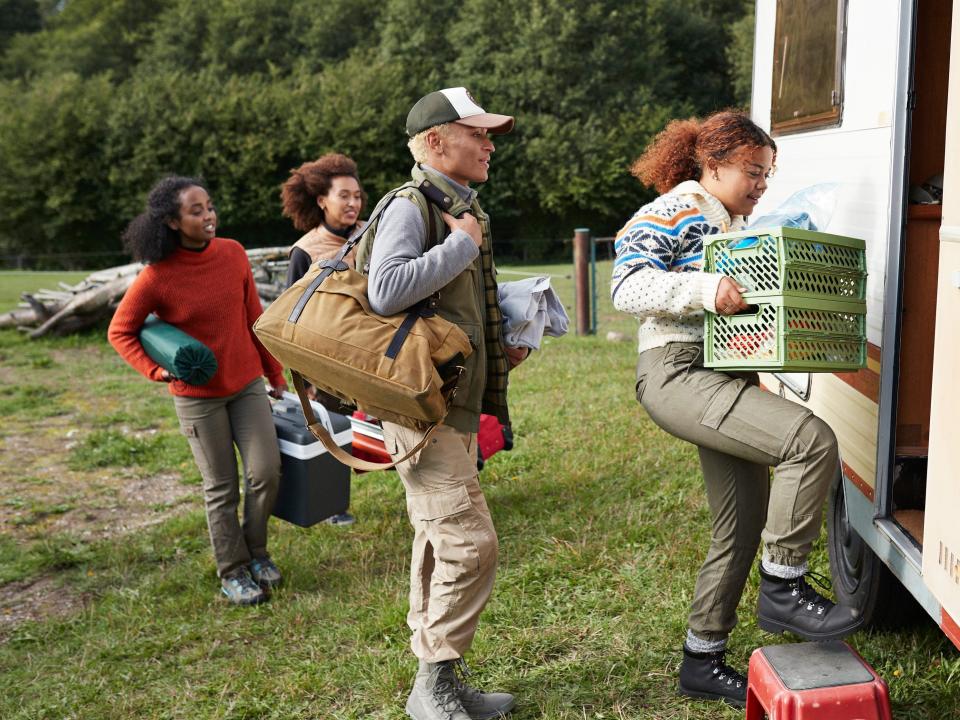
"You don't need as much stuff as you think," Julie said. "You'll probably end up wearing the same shirt, shorts, and flip-flops or hiking shoes every day."
The couple advises against going to a campground without reservations.
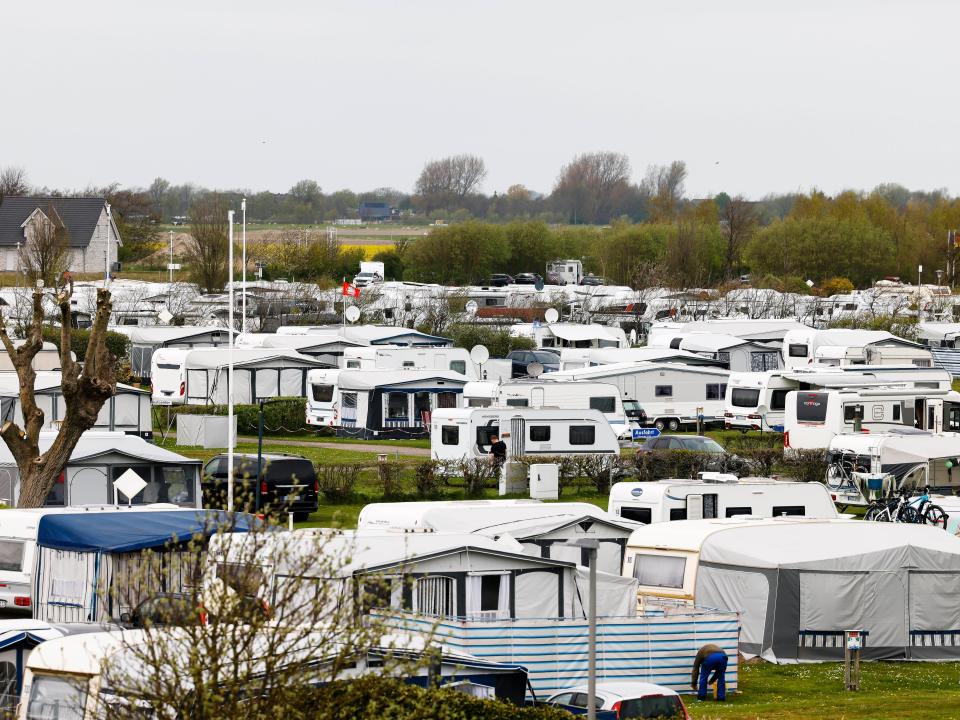
Don't make the mistake of assuming a campground will have an available site, especially in the summer, Marc told Insider. Instead, Marc said to either make reservations at the grounds or be flexible in your travel planning.
"If you're willing to just wing it and go with the flow, you can sometimes find last-minute cancellations of campgrounds," he added.
Marc and Julie also said that people often underestimate travel time when starting RV life.

If your navigation says the trip will take four hours, plan for five, Julie said.
"We always like to allow an extra 20% as a buffer," she said. "You need to stop and have a break, use the restroom, have something to eat or drink. It's a lot more physically tiring to drive an RV than a regular vehicle."
Don't make the mistake of overplanning your trip, Julie said.
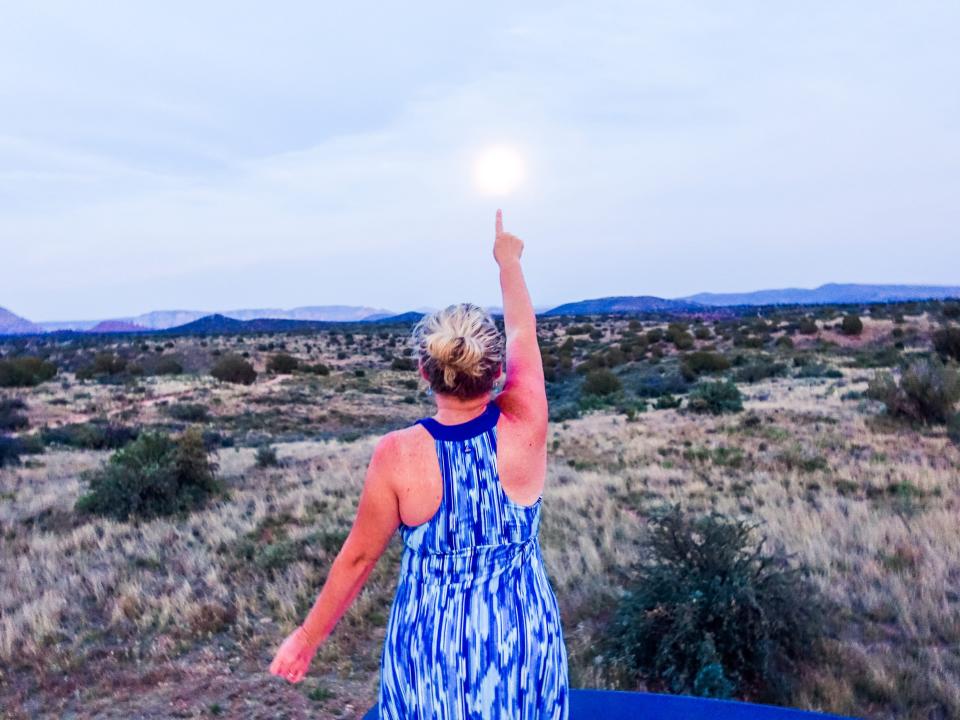
"Allow time and space for serendipities along the way," Julie and Marc wrote in their book "RV Hacks." "If you are too rigid in your planning, you lose the ability to adapt or accept unexpected invitations and opportunities."
Relying on technology could result in getting lost, Julie said.
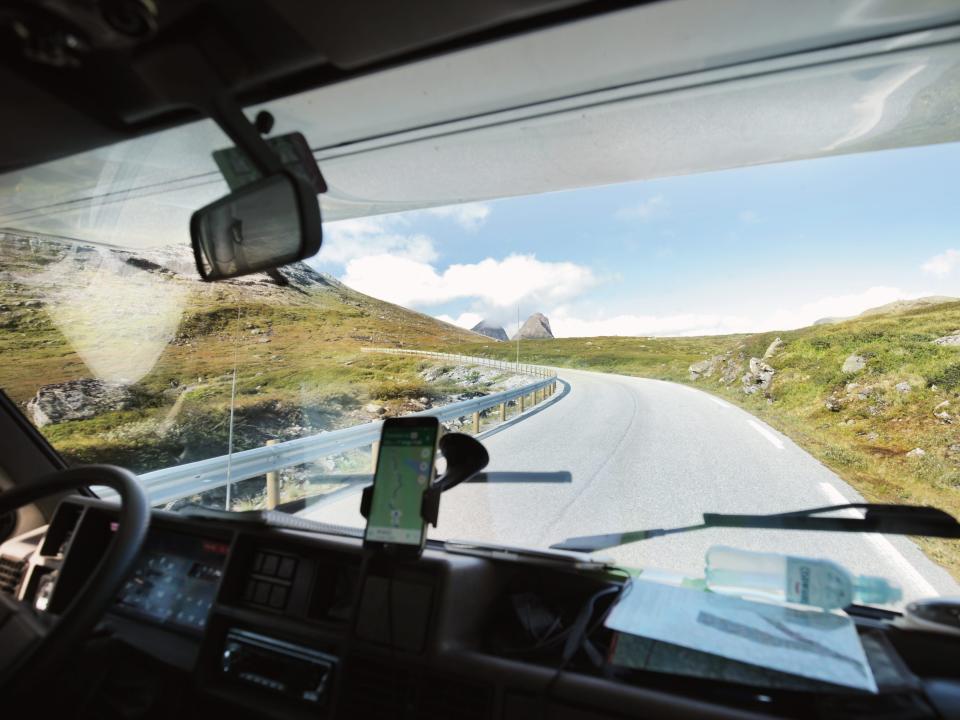
Julie said to avoid relying solely on your phone to get you where you need to go.
"You could be driving in an area where you don't have cellular coverage and therefore your routing may not be working," she said. "You can download your map or just carry a paper atlas."
If you misuse the waste tanks, you'll be dealing with a smelly mess, according to Marc and Julie.

The Bennetts said there are two tank valves: One is black, and the other is gray.
Keep the black one closed (as that's the valve for poop) so the waste doesn't dry up. Once they're both at least half full, dump the black tank first followed by the gray.
People generally check the weather at their starting point and destination but not everywhere in between, the couple said.
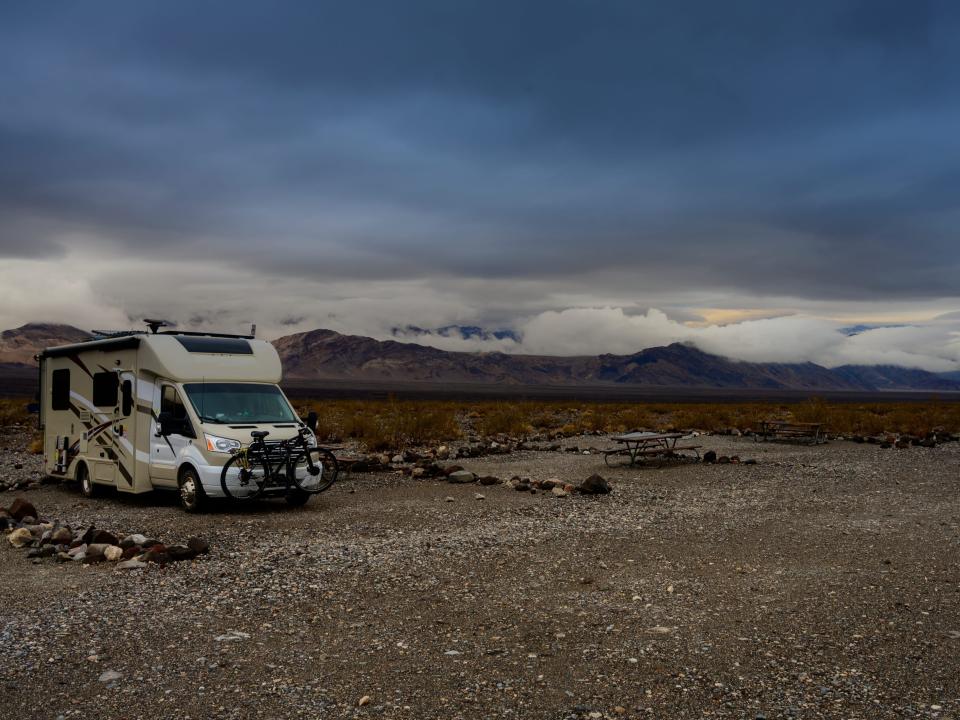
Keep an eye on the weather not only where you are and where you're going, but also everywhere in between, too, the couple said.
If it's windy, try stopping for a bit. You're in a home on wheels, after all.
"Try to avoid driving in winds," Julie added. "It's more dangerous, stressful, physically fatiguing to drive an RV in windy conditions."
Read the original article on Insider

